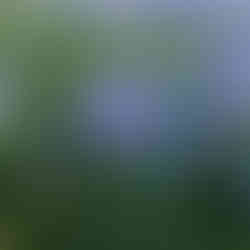Chalk milkwort (Polygala calcarea) at Avebury
- Fay Brotherhood

- May 6
- 2 min read

When i saw this milkwort (Polygala sp) on one of the chalk banks of Avebury henge last weekend, I literally threw myself down it for a looksie.
My first instinct was that it looked different to common (P. vulgaris) and heath milkwort (P. serpyllifolia), whom I have already seen, from quite some distance and I might finally have found chalk milkwort (P. calcarea) which I needed to complete the suite!
How did it look different from a distance?The look of the distant plant is something rarely described books. You need to let your eyes do the talking and learn to catch the vibe.
It was more..."flouncy". Gave me garden centre hanging basket plant vibes. The white parts seemed more obvious. They also seem more pastel in shade than most examples I've of their comrades.
(This group as a whole is quite variable colour wise anyway so we can't use colour as a reliable measure but i deffo got a vibe of difference from it)
This "flouncy, blousy" character turned out to be a real diagnostic feature as it comes from the flowers being arranged in "bunched wheels" of 6 to 20. Common and heath have much fewer flowers.
The pastel vibes come in part from the fact that unlike common, the petals of chalk generally lack dark veins, which visually contribute to a more striking colour.
When I've seen heath and common, I've noted them to be altogether more subtle delicate. Like little sapphire jewels in the grass of heath and Down, they are often plentiful but you do have to look to notice them.
Looking more closely a big clue in this group is in the leaves, which are arranged alternately up the stem and are blunt in shape like a spoon. Common and heath have pointy leaves and heaths are oppositely arranged.
Chalk also has a kind of sprawling habit which comes from a three part stem system. This would explain more of its clustered rather than scattered appearance.
This sprawling habit explains why I struggled to find the base of the plants and photograph a key feature, which was increasing size of leaves going down stem and a basal rosette-esque leaf arrangement down the bottom.
I was a little hungover after a night of camp fire shenanigans and couldn't get my head around the reality that it was sprawling. I could not understand why I couldn't find the end of the plant, got annoyed and let it go because sometimes life is just too confusing 😅
So in conclusion, I reckon I do have the chalky milky here but would appreciate any comments from my botanical brethren!














Comments